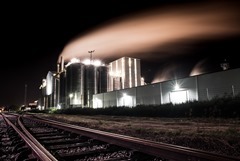Many small and medium-sized manufacturers, including start-ups, usually start their lives combining manual systems with software.
The reason for this working method is usually financial, provided the organization grows and acquires a more consolidated system in the future.
No major growth is needed to make production much more complex. When this happens, manual and time-consuming systems become an obstacle.
Adding an MRP System
Material requirements planning (MRP) is a production planning, scheduling, and inventory control system used to manage manufacturing processes.
In a hyper-competitive manufacturing world, having good enterprise systems is crucial for success. And, as growth brings additional business in the form of production orders, small and medium-sized manufacturers are facing a number of growth-hurdling challenges. These problems may include:
· Too much data combined with different systems overburdens production and design.
· The company understands that greater automation is needed to streamline processes.
· The amount of data in a growing operation makes data analysis difficult and has a negative impact on decision making.
· Additional functionality is needed, as staff who had previously done combined work now have to take on more specific, traditional roles where the functions are organized as a departmental structure.
At this point, manufacturers will begin exploring MRP systems to address these issues. MRP systems can undo data silos and consolidate operations and communications under one platform, avoiding the need for multiple software platforms that work side by side and sometimes oppose each other.
MRP systems also allow for automation, which helps employees work more efficiently and enables managers to make all the toughest decisions using real-time data. And allow data to be standardized, opening the door to improve the process at all levels.
How MRP System Simplifies Manufacturing
he overall goal of a strong MRP system is to streamline business practices across all aspects of the business. For production, this streamlining may include:
Centralized Data – When a company uses multiple systems to manage its operations, information, insight, and analytics can be lost. Because many of these systems collect and return data in different ways, ensuring consistency in reporting is often a confusing, error-prone, and manual step from data rationalization. The MRP system centralizes this data. This eliminates the need for data reconciliation and creates a unified version of the truth that is available to all departments as needed.
Real-time automation – Real-time automated processes are more efficient and productive. This allows manufacturers to apply process standardization. By centralizing data and making it accessible to factory workers, processes can be improved to allow for more efficient material flow while reducing the number of manual labor steps.
Fewer errors – Real-time automation introduces fewer errors into workflows due to lower quality dropout rates. It is more cost-effective and simplifies production through reduced re-engineering, reduced waste and reduced material costs.
Strategic Decision Making – Because data is standardized and shared, and because automation is more efficient, managers can spend more time analyzing data in real time and less time “putting out fires”. Data quality, in conjunction with this improvement in productivity, sharpens decision-making to increase flexibility and responsiveness to further improve production processes.
MRP systems simplify business operations through the organization. And as today’s global manufacturing environment becomes more complex, businesses need reliable and flexible MRP systems to stay competitive. This is especially true for small and medium-sized manufacturers who need flexible, scalable MRP systems that are customized or customized to their work size and needs. Modern MRP systems for these companies are affordable, flexible, cloud-based, scalable, and can consolidate production and inventory control processes in an automated environment that gives every manufacturer the best chance of success.

